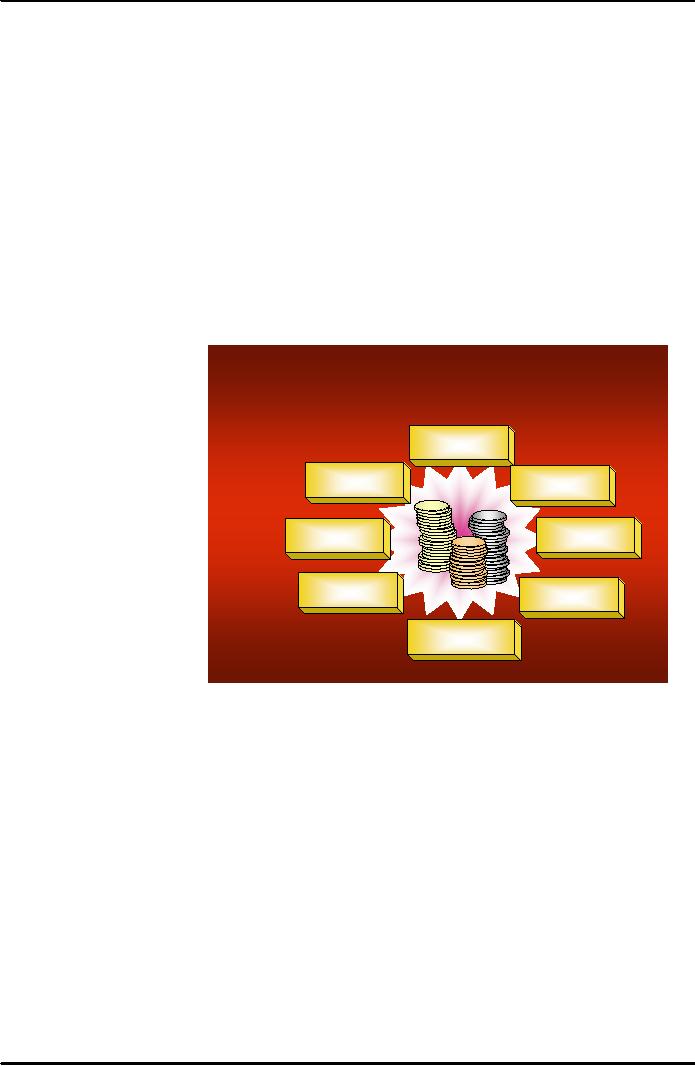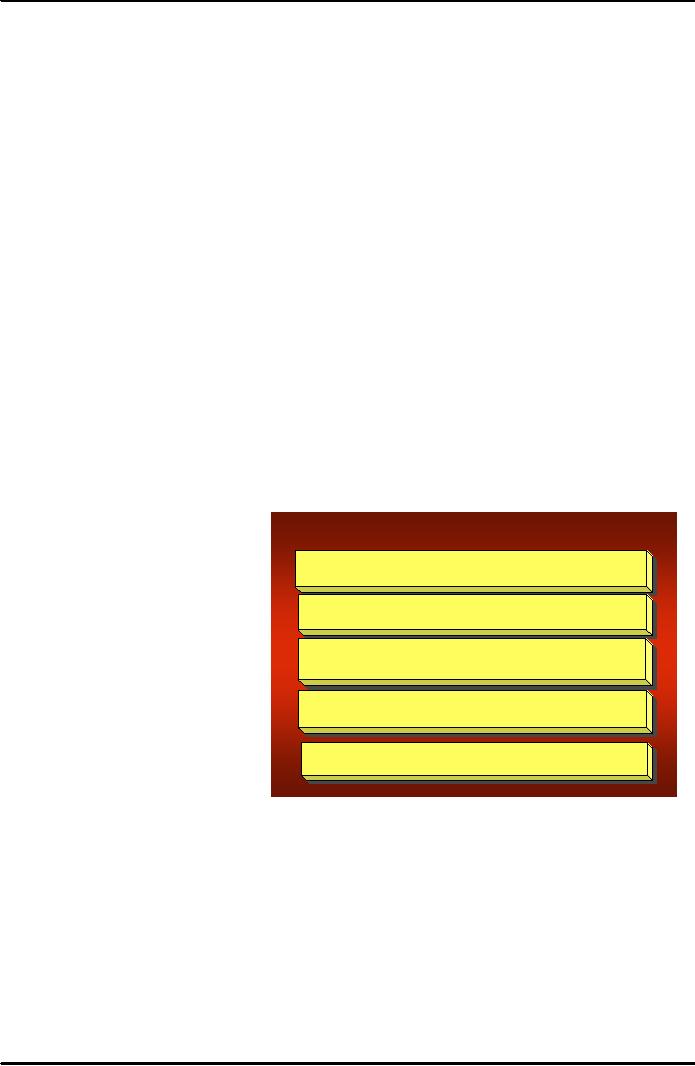 |

Principles
of Marketing MGT301
VU
Lesson
34
Lesson
overview and learning objectives:
Today
we will continue and discuss
the remaining steps in major advertising
decisions and other
topic
of today's Lesson is
ADVERTISING
(CONT.)
SALES
PROMOTION
b)
Selecting
advertising media.
The
major steps in media
selection are:
i.
Deciding
on reach, frequency, and
impact;
ii.
Choosing among major media
types;
iii.
Selecting specific media
vehicles;
iv.
Deciding
on media timing.
I.
Deciding on Reach, Frequency, and
Impact
To
select media, the advertiser
must decide what reach
and frequency are needed to
achieve
advertising
objectives. Reach
is a
measure of the percentage
of
people in the target market
who are
exposed
to the ad campaign during a given period
of time. For example, the
advertiser might try
to
reach
70 percent of the target market during
the first three months of
the campaign. Frequency
is
a
measure
of how many times
the
average person in the target
market is exposed to the
message. For
example,
the advertiser might want an
average exposure frequency of three.
The advertiser also
must
decide on the desired
media
impact--the
qualitative
value of a
message exposure through a
given
medium.
For example, for products
that need to be demonstrated, messages on
television may
have
more impact than messages on
radio because television
uses sight and
sound.
The same
message
in one magazine may be more
believable than in another. In
general, the more
reach,
frequency,
and impact the advertiser
seeks, the higher the
advertising budget will have to
be.
II.
Choosing Among Major Media
Types
The
media planner has to know
the reach, frequency, and
impact of each of the major
media types.
The
major media types are
newspapers, television, direct mail, radio, magazines,
outdoor, and the
Internet.
Each medium has advantages
and limitations.
Media
planners consider many factors
when making their media
choices. The media
habits of target
consumers
will
affect media choice--advertisers look
for media that reach
target consumers
effectively.
So will the nature
of the product--for
example, fashions are best
advertised in color
magazines,
and automobile performance is best
demonstrated on television. Different types
of
messages
may
require different media. A message
announcing a major sale
tomorrow will require
radio
or newspapers; a message with a
lot of technical data might require
magazines, direct
mailings,
or an online ad and Web
site. Cost
is
another major factor in
media choice. For
example,
network
television is very expensive,
whereas newspaper or radio advertising
costs much less
but
also
reaches fewer consumers. The
media planner looks both at
the total cost of using a
medium
and
at the cost per thousand
exposures--the cost of reaching
1,000 people using the
medium.
Media
impact and cost must be
reexamined regularly. For a
long time, television and
magazines
have
dominated in the media mixes of
national advertisers, with
other media often
neglected.
Recently,
however, the costs and
clutter of these media have
gone up, audiences have
declined, and
marketers
are adopting strategies beamed at
narrower segments. As a result,
advertisers are
increasingly
turning to alternative media--ranging
from cable TV and outdoor
advertising to
parking
meters and shopping carts--that
cost less and target
more effectively.
173

Principles
of Marketing MGT301
VU
III.
Selecting Specific Media
Vehicles
The
media planner now must
choose the best media
vehicles--specific
media within each
general
media
type. Media planners must compute
the cost per thousand
persons reached by a vehicle.
The
media
planner ranks each magazine
by cost per thousand and
favors those magazines with
the
lower
cost per thousand for
reaching target consumers.
The
media planner must also
consider the costs of
producing ads for different
media. Whereas
newspaper
ads may cost very
little to produce, flashy television
ads may cost millions. In
selecting
media
vehicles, the media planner
must balance media cost
measures against several
media impact
factors.
First, the planner should
balance costs against the
media vehicle's audience
quality.
IV.
Deciding on Media
Timing
The
advertiser must also decide
how to schedule the advertising
over the course of a year.
Suppose
sales
of a product peak in December
and drop in March. The
firm can vary its advertising
to
follow
the seasonal pattern, to
oppose the seasonal pattern,
or to be the same all year.
Most firms
do
some seasonal advertising. Some do
only
seasonal
advertising. Finally, the advertiser
has to
choose
the pattern of the ads.
Continuity
means
scheduling ads evenly within a given
period. Pulsing
means
scheduling ads unevenly over a given
time period.. The idea is to
advertise heavily for
a
short
period to build awareness that
carries over to the next
advertising period. Those who
favor
pulsing
feel that it can be used to
achieve the same impact as a
steady schedule but at a
much lower
cost.
However, some media planners
believe that although
pulsing achieves minimal
awareness, it
sacrifices
depth of advertising
communications.
Recent
advances in technology have
had a substantial impact on the media
planning and buying
functions.
a.
Evaluating Advertising
The
fourth step in the advertising
campaign is evaluation of the
campaign. The advertising
program
should evaluate both the
communication effects and the
sales effects of advertising
regularly.
Measuring the communication
effects of an
ad--copy
testing--tells
whether the ad is
communicating
well. Copy testing can be done before or
after an ad is printed or broadcast.
Before
the
ad is placed, the advertiser
can show it to consumers, ask
how they like it, and
measure recall or
attitude
changes resulting from it.
After the ad is run, the
advertiser can measure how
the ad
affected
consumer recall or product awareness, knowledge,
and preference.
But
what sales
are
caused by an ad that increases
brand awareness by 20 percent and
brand
preference
by 10 percent? The sales
effects of advertising
are often harder to measure
than the
communication
effects. Sales are affected by many
factors besides advertising--such as
product
features,
price, and
availability.
b.
Ways to Handle Advertising
Different
companies organize in different
ways to handle advertising. In small
companies,
advertising
might be handled by someone in the
sales department. Large companies
set up
advertising
departments whose job it is to set
the advertising budget, work with
the ad agency, and
handle
other advertising not done by the
agency. Most large companies
use outside advertising
agencies
because they offer several
advantages.
How
does an advertising agency work?
Advertising agencies were
started in the mid-to-late
1800s
by
salespeople and brokers who
worked for the media
and received a commission for
selling
advertising
space to companies. As time
passed, the salespeople
began to help customers
prepare
their
ads. Eventually, they formed
agencies and grew closer to
the advertisers than to the
media.
Today's
agencies employ specialists
who can often perform
advertising tasks better than
the
company's
own staff. Agencies also
bring an outside point of view to
solving the company's
problems,
along with lots of experience
from working with different
clients and situations. Thus,
today,
even companies with strong
advertising departments of their own use
advertising agencies.
174

Principles
of Marketing MGT301
VU
Most
large advertising agencies have
the staff and resources to
handle all phases of an
advertising
campaign
for their clients, from
creating a marketing plan to developing ad
campaigns and
preparing,
placing, and evaluating ads. Agencies
usually have four departments:
creative,
which
develops
and produces ads; media,
which
selects media and places
ads; research,
which
studies
audience
characteristics and wants; and
business,
which
handles the agency's
business activities.
Each
account is supervised by an account
executive, and people in each
department are
usually
assigned
to work on one or more accounts.
However,
both advertisers and
agencies have become more
and more unhappy with
the
commission
system. Larger advertisers
complain that they pay
more for the same
services received
by
smaller ones simply because
they place more advertising. Advertisers
also believe that
the
commission
system drives agencies away
from low-cost media and
short advertising campaigns.
Another
factor is vast changes in
how ad agencies reach consumers
that go way beyond
network
TV
or magazine advertising. Another trend is
affecting the advertising agency
business: Many
agencies
have sought growth by
diversifying into related marketing
services. These new
diversified
agencies
offer a complete list of integrated
marketing and promotion
services under one
roof,
including
advertising, sales promotion, marketing
research, public relations, and direct
and online
marketing.
Some have even added
marketing consulting, television
production, and sales
training
units
in an effort to become full
"marketing partners" to their
clients.
However,
agencies are finding that
most advertisers don't want
much more from them
than
traditional
media advertising services plus direct
marketing, sales promotion, and
sometimes public
relations.
Thus, many agencies have
recently limited their
diversification efforts in order to
focus
more
on traditional services. Some
have even started their
own "creative boutiques," smaller
and
more
independent agencies that can develop
creative campaigns for clients free of
large-agency
bureaucracy.
A.
Sales Promotion
Sales
promotion consists of short-term
incentives to encourage the purchase or
sale of a product
or
service. Whereas advertising and
personal selling offer reasons to
buy a product or service,
sales
promotion
offers reasons to buy
now.
Several
factors have contributed to
the rapid growth of sales
promotion, particularly in
consumer
markets.
First, inside the company,
product managers face
greater pressures to increase
their
current
sales, and promotion is viewed as an
effective short-run sales
tool. Second, externally,
the
company
faces more competition and
competing brands are less
differentiated. Increasingly,
competitors
are using sales promotion to
help differentiate their
offers. Third, advertising
efficiency
has declined because of rising
costs, media clutter, and
legal restraints. Finally,
consumers
have become more deal
oriented and ever-larger retailers
are demanding more
deals
from
manufacturers.
The
growing use of sales
promotion has resulted in promotion
clutter, similar to
advertising clutter.
Consumers
are increasingly tuning out
promotions, weakening their
ability to trigger immediate
purchase.
Manufacturers are now
searching for ways to rise
above the clutter, such as
offering
larger
coupon values or creating
more dramatic point-of-purchase
displays.
a.
Sales Promotion Objectives
Sales
promotion objectives vary widely.
Sellers may use consumer
promotions to increase
short-
term
sales or to help build
long-term market share. Objectives
for trade promotions include
getting
retailers
to carry new items and more
inventories, getting them to advertise
the product and give
it
more
shelf space, and getting
them to buy ahead. For
the sales force, objectives
include getting
more
sales force support for
current or new products or getting
salespeople to sign up
new
accounts.
Sales promotions are usually
used together with advertising or
personal selling.
Consumer
promotions must usually be
advertised and can add
excitement and pulling power
to
ads.
Trade and sales force
promotions support the
firm's personal selling
process.
175

Principles
of Marketing MGT301
VU
In
general, sales promotions
should be consumer
relationship building. Rather
than creating only
short-
term
sales or temporary brand
switching, they should help
to reinforce the product's
position and
build
long-term relationships with consumers.
Increasingly, marketers are avoiding
"quick fix,"
price-only
promotions in favor of promotions
designed to build brand
equity.
b.
Major Sales Promotion
Tools
Many
tools can be used to accomplish
sales promotion objectives. Descriptions of
the main
consumer,
trade, and business
promotion tools
follow.
Consumer
Promotion Tools
The
main consumer promotion tools
include samples, coupons, cash
refunds, price packs,
premiums,
advertising specialties, patronage
rewards, point-of-purchase
displays and
demonstrations,
and contests, sweepstakes,
and games.
�
Samples
are
offers of a trial amount of a
product. Sampling is the
most effective--but
most
expensive--
Consumer
Sales Promotion
way
to introduce a
new
product. Some
Techniques
samples
are free;
for
others, the
Price
Deals
company
charges a
small
amount to
Advertising
Coupons
Specialties
offset
its cost. The
sample
might be
delivered
door-to-
Rebates
Sampling
door,
sent by mail,
handed
out in a
Cross-
store,
attached to
Premiums
Promotions
another
product, or
Contests,
Games,
featured
in an ad.
Sweepstakes
Sometimes,
samples
are
combined
into sample packs, which
can then be used to promote
other products and
services.
�
Coupons
are
certificates that give buyers a
saving when they purchase
specified products.
Most
consumers love coupons: Coupons can
stimulate sales of a mature
brand or promote
early
trial of a new brand.
However, as a result of coupon
clutter, redemption rates
have
been
declining in recent years. Thus,
most major consumer goods
companies are issuing
fewer
coupons and targeting them
more carefully.
�
Cash
refund offers (or rebates)
are
like coupons except that the
price reduction occurs
after
the purchase rather than at
the retail outlet. The consumer
sends a "proof of
purchase"
to the manufacturer, who
then refunds part of the
purchase price by mail.
�
Price
packs (also called cents-off deals) offer
consumers savings off the regular
price of
a
product. The reduced prices
are marked by the producer
directly on the label or
package.
Price
packs can be single packages
sold at a reduced price (such as two
for the price of
one),
or two related products
banded together (such as a toothbrush
and toothpaste).
Price
packs
are very effective--even
more so than coupons--in
stimulating short-term
sales.
�
Premiums
are
goods offered either free or at
low cost as an incentive to
buy a product,
ranging
from toys included with
kids' products to phone
cards, compact disks,
and
176

Principles
of Marketing MGT301
VU
computer
CD-ROMs. A premium may come
inside the package (in-pack), outside
the
package
(on-pack), or through the mail.
�
Advertising
specialties are
useful articles imprinted
with an advertiser's name given
as
gifts
to consumers. Typical items include
pens, calendars, key rings,
matches, shopping
bags,
T-shirts, caps, nail files,
and coffee mugs. Such items
can be very effective. In
a
recent
study, 63 percent of all consumers
surveyed were either carrying or
wearing an ad
specialty
item. More than three-quarters of those
who had an item could recall
the
advertiser's
name or message before showing
the item to the
interviewer.
�
Patronage
rewards are
cash or other awards offered
for the regular use of a
certain
company's
products or services. For
example, airlines offer
frequent flier plans,
awarding
points
for miles traveled that can
be turned in for free airline
trips.
�
Point-of-purchase
(POP) promotions include
displays and demonstrations that
take
place
at the point of purchase or
sale. Unfortunately, many
retailers do not like to handle
the
hundreds of displays, signs,
and posters they receive
from manufacturers each
year.
Manufacturers
have responded by offering
better POP materials, tying
them in with
television
or print messages, and
offering to set them
up.
�
Contests,
sweepstakes, and games give
consumers the chance to win
something, such
as
cash, trips, or goods, by
luck or through extra effort. A
contest
calls
for consumers to
submit
an entry--a jingle, guess,
suggestion--to be judged by a panel
that will select
the
best
entries. A sweepstakes
calls
for consumers to submit
their names for a drawing. A
game
presents
consumers with something--bingo numbers,
missing letters--every time
they
buy,
which may or may not
help them win a prize. A
sales contest urges dealers or
the sales
force
to increase their efforts,
with prizes going to the top
performers
i.
Trade
Promotion Tools
Trade
promotion can persuade
resellers to carry a brand, give it
shelf space, promote it
in
advertising,
and push it to consumers. Shelf space is
so scarce these days that
manufacturers often
have
to offer price-offs, allowances, buy-back
guarantees, or free goods to retailers
and wholesalers
to
get products on the shelf
and, once there, to stay on
it.
Manufacturers
use several trade promotion
tools. Many of the tools
used for consumer
promotions--contests,
premiums, displays--can
also be used as trade
promotions. Or the
manufacturer
may offer a straight
discount
off
the list price on each
case purchased during
a
stated
period of time (also called a
price-off,
off-invoice, or
off-list). The
offer encourages dealers to
buy
in
quantity or to carry a new item.
Dealers can use the
discount for immediate
profit, for
advertising,
or for price reductions to
their customers.
Manufacturers
also may offer an allowance
(usually
so much off per case) in
return for the
retailer's
agreement to feature the manufacturer's
products in some way. An
advertising
allowance
compensates
retailers for advertising the
product. A display
allowance compensates
them
for using special
displays.
Manufacturers
may offer free
goods, which
are extra cases of merchandise, to
resellers who buy a
certain
quantity or who feature a certain flavor
or size. They may offer
push
money--cash
or gifts
to
dealers or their sales forces to
"push" the manufacturer's
goods. Manufacturers may
give
retailers
free specialty
advertising items that
carry the company's name, such as pens,
pencils, calendars,
paperweights,
matchbooks, memo pads, and
yardsticks.
ii.
Business
Promotion Tools
Companies
spend billions of dollars each
year on promotion to industrial
customers. These
business
promotions are used to
generate business leads,
stimulate purchases, reward
customers,
and
motivate salespeople. Business
promotion includes many of the
same tools used for
consumer
177

Principles
of Marketing MGT301
VU
or
trade promotions. Here, we
focus on two additional major
business promotion
tools--
conventions
and trade shows, and sales
contests.
Many
companies and trade
associations organize conventions
and trade shows to
promote their
products.
Firms selling to the industry
show their products at the
trade show. Trade shows
also
help
companies reach many
prospects not reached
through their sales forces.
About 90 percent of
a
trade show's visitors see a company's
salespeople for the first
time at the show. A
sales
contest is
a
contest
for salespeople or dealers to
motivate them to increase
their sales performance over
a given
period.
Sales contests motivate and
recognize good company
performers, who may receive
trips,
cash
prizes, or other gifts. Some
companies award points for
performance, which the receiver
can
turn
in for any of a variety of prizes.
Sales contests work best
when they are tied to
measurable and
achievable
sales objectives (such as finding new
accounts, reviving old accounts, or
increasing
account
profitability).
c.
Developing the Sales Promotion
Program
The
marketer must make several
other decisions in order to define
the full sales
promotion
program.
First, the marketer must
decide on the size
of the incentive.
A certain
minimum
incentive
is necessary if the promotion is to
succeed; a larger incentive
will produce more
sales
response.
The marketer also must set
conditions
for participation.
Incentives
might be offered
to
everyone or only to select groups.
The
marketer must decide how to
promote
and distribute the promotion
program itself.
A 50-
cents-off
coupon could be given out in a
package, at the store, by mail, or in an
advertisement.
Each
distribution method involves a
different level of reach and
cost. Increasingly, marketers
are
blending
several media into a total
campaign concept. The length
of the promotion is
also
important.
If the sales
promotion
period
is too short, many
prospects
(who
may not be buying during
that
Deciide on tthe Siize off tthe IIncenttiive
Dec
de on he S ze o he ncen ve
time)
will miss it. If the
promotion
runs
too long, the deal
will lose
Sett
Condiittiions fforr Parrttiiciipattiion
some
of its "act now"
force.
Se
Cond ons o Pa c pa on
Evaluation
is
also very important.
Detterrm iine How tto Prrom otte and
De
e m ne How o P om o e and
Yet
many companies fail to
evaluate
Diisttrriibutte tthe Prrom ottiion Prrogrram
D
s bu e he P om o on P og am
their
sales promotion programs,
and
others
evaluate
them
only
Detterrm iine tthe Lengtth off tthe Prrogrram
De
e m ne he Leng h o he P og am
superficially.
Manufacturers can use
one
of many evaluation methods.
The
most common method is
to
Evalluatte tthe Prrogrram
Eva
ua e he P og am
compare
sales before, during,
and
after
a promotion. Suppose a
company
has a 6 percent market share before the
promotion, which jumps to 10 percent
during
the
promotion, falls to 5 percent right
after, and rises to 7 percent later
on. The promotion
seems
to
have attracted new triers
and more buying from
current customers. After the
promotion, sales
fell
as consumers used up their inventories.
The long-run rise to 7 percent
means that the
company
gained
some new users. If the
brand's share had returned to
the old level, then
the promotion
would
have changed only the
timing
of
demand rather than the
total
demand.
Consumer
research would also show
the kinds of people who
responded to the promotion
and
what
they did after it ended.
Surveys
can
provide information on how
many consumers recall
the
promotion,
what they thought of it,
how many took advantage of
it, and how it affected
their
buying.
Sales promotions also can be
evaluated through experiments
that
vary factors such as
incentive
value, length, and distribution
method.
178

Principles
of Marketing MGT301
VU
Clearly,
sales promotion plays an
important role in the total
promotion mix. To use it
well, the
marketer
must define the sales
promotion objectives, select the
best tools, design the
sales
promotion
program, implement the program, and
evaluate the results. Moreover,
sales promotion
must
be coordinated carefully with other
promotion mix elements
within the integrated marketing
communications
program.
d.
Sales Promotion Uses and
Limitations of Sales
Promotion
Sales
promotion tools are
effective for the organizations in
different aspects like they
can be used
to
Introduce new products, making existing
customers to buy more, Attract
new customers,
Combat
competition, Maintain sales in
off season, Increase retail
inventories, Tie in advertising
and
personal
selling, Enhance personal selling
efforts. Beside these
advantages, sales promotions
have
certain
limitations as well like Cannot
Reverse Declining Sales
Trend, Cannot Overcome,
inferior
Product,
May Encourage Competitive Retaliation,
May Hurt Profit
179
Table of Contents:
- PRINCIPLES OF MARKETING:Introduction of Marketing, How is Marketing Done?
- ROAD MAP:UNDERSTANDING MARKETING AND MARKETING PROCESS
- MARKETING FUNCTIONS:CUSTOMER RELATIONSHIP MANAGEMENT
- MARKETING IN HISTORICAL PERSPECTIVE AND EVOLUTION OF MARKETING:End of the Mass Market
- MARKETING CHALLENGES IN THE 21st CENTURY:Connections with Customers
- STRATEGIC PLANNING AND MARKETING PROCESS:Setting Company Objectives and Goals
- PORTFOLIO ANALYSIS:MARKETING PROCESS,Marketing Strategy Planning Process
- MARKETING PROCESS:Analyzing marketing opportunities, Contents of Marketing Plan
- MARKETING ENVIRONMENT:The Company’s Microenvironment, Customers
- MARKETING MACRO ENVIRONMENT:Demographic Environment, Cultural Environment
- ANALYZING MARKETING OPPORTUNITIES AND DEVELOPING STRATEGIES:MIS, Marketing Research
- THE MARKETING RESEARCH PROCESS:Developing the Research Plan, Research Approaches
- THE MARKETING RESEARCH PROCESS (Continued):CONSUMER MARKET
- CONSUMER BUYING BEHAVIOR:Model of consumer behavior, Cultural Factors
- CONSUMER BUYING BEHAVIOR (CONTINUED):Personal Factors, Psychological Factors
- BUSINESS MARKETS AND BUYING BEHAVIOR:Market structure and demand
- MARKET SEGMENTATION:Steps in Target Marketing, Mass Marketing
- MARKET SEGMENTATION (CONTINUED):Market Targeting, How Many Differences to Promote
- Product:Marketing Mix, Levels of Product and Services, Consumer Products
- PRODUCT:Individual product decisions, Product Attributes, Branding
- PRODUCT:NEW PRODUCT DEVELOPMENT PROCESS, Idea generation, Test Marketing
- NEW PRODUCT DEVELOPMENT:PRODUCT LIFE- CYCLE STAGES AND STRATEGIES
- KEY TERMS:New-product development, Idea generation, Product development
- Price the 2nd P of Marketing Mix:Marketing Objectives, Costs, The Market and Demand
- PRICE THE 2ND P OF MARKETING MIX:General Pricing Approaches, Fixed Cost
- PRICE THE 2ND P OF MARKETING MIX:Discount and Allowance Pricing, Segmented Pricing
- PRICE THE 2ND P OF MARKETING MIX:Price Changes, Initiating Price Increases
- PLACE- THE 3RD P OF MARKETING MIX:Marketing Channel, Channel Behavior
- LOGISTIC MANAGEMENT:Push Versus Pull Strategy, Goals of the Logistics System
- RETAILING AND WHOLESALING:Customer Service, Product Line, Discount Stores
- KEY TERMS:Distribution channel, Franchise organization, Distribution center
- PROMOTION THE 4TH P OF MARKETING MIX:Integrated Marketing Communications
- ADVERTISING:The Five M’s of Advertising, Advertising decisions
- ADVERTISING:SALES PROMOTION, Evaluating Advertising, Sales Promotion
- PERSONAL SELLING:The Role of the Sales Force, Builds Relationships
- SALES FORCE MANAGEMENT:Managing the Sales Force, Compensating Salespeople
- SALES FORCE MANAGEMENT:DIRECT MARKETING, Forms of Direct Marketing
- DIRECT MARKETING:PUBLIC RELATIONS, Major Public Relations Decisions
- KEY TERMS:Public relations, Advertising, Catalog Marketing
- CREATING COMPETITIVE ADVANTAGE:Competitor Analysis, Competitive Strategies
- GLOBAL MARKETING:International Trade System, Economic Environment
- E-MARKETING:Internet Marketing, Electronic Commerce, Basic-Forms
- MARKETING AND SOCIETY:Social Criticisms of Marketing, Marketing Ethics
- MARKETING:BCG MATRIX, CONSUMER BEHAVIOR, PRODUCT AND SERVICES
- A NEW PRODUCT DEVELOPMENT:PRICING STRATEGIES, GLOBAL MARKET PLACE